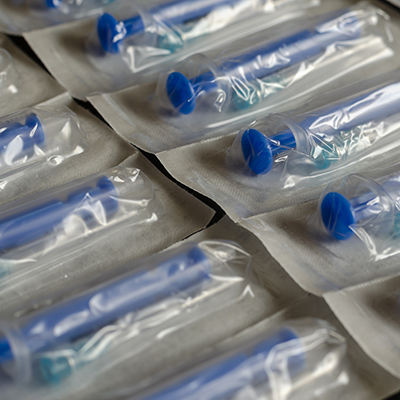
A medical product package system must meet regulatory requirements as outlined under the ISO 11607 guidelines which clearly state that the manufacturer must ensure the product and package system conjoin to create a complete product which performs efficiently, safely, and effectively in the hands of the user. In addition, there are numerous environmental and physical conditions that medical packages may be exposed to when traveling from point of manufacture to the sterilization facility, distribution center, health care facility, or any other final destination. Therefore, to comply with the ISO guidelines, in addition to routine package system validation functional requirements, distribution simulation testing should be conducted to evaluate to ensure a comprehensive validation and evaluation of the package system. Listed below is an outline of specific validation and distribution test procedures that may be applicable to your specific package system.
Package Functional Validation – provides assurance and security that a package is sealed properly, leak-free, and secure from any number of outside contaminants.
- ASTM F1886 – Visual Inspection Test
- ASTM F88 – Peel Strength Test
- ASTM F1140 – Burst Test
- ASTM F1929 – Dye Penetration Test
- ASTM F1140 – Creep Test
- ASTM F2096 – Bubble Emission Test
- USP 1207 – Container Closure Integrity Testing (in place of ASTM 1928 Dye Penetration Testing). Note that per European Annex 1 requirements, CCIT testing must be done in conjunction with simulated distribution testing for certain products and package system)
Distribution Simulation Testing – as based on ASTM 4169 or ISTA test procedures, Distribution Simulation is a systematic and repetitious way of testing shipping containers by exposing them to the hazards they may face during the shipment and transfer process. Examples of simulated hazard tests include:
 Drop – Used to determine the rugged nature of medical packages and the effectiveness of interior cushioning when the products or packages systems are exposed to impact during material handling operations.
Drop – Used to determine the rugged nature of medical packages and the effectiveness of interior cushioning when the products or packages systems are exposed to impact during material handling operations.- Vibration – Used to determine the ability of medical packages and products to withstand shock and vibration encountered during the entire transit course.
- Compression – Used to determine the maximum compression resistance and long-term stacking strength of both individual medical packages and their master shipping containers.
- Concentrated impact – This test evaluates the ability of packaging to resist the force of concentrated impacts from outside sources, such as those encountered in various modes of transportation and handling.
- Vacuum (low pressure) – This test determines the effects of high altitude or pressure differential when packaged products are transported via certain modes of transport such as aircraft or ground over high mountain passes.

